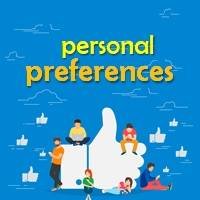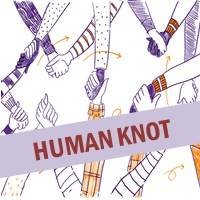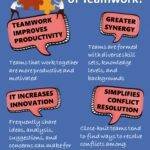
4 Fun Ideas for Quick Team Building Activities
When people think about team building activities, many times they think of a half-day activity or a full day away from the office. The good thing about quick team building activities is that it doesn’t have to take that much time to cultivate the benefits of team building!
There are lots of team building activities that can give your team benefits in a short amount of time. Here are 4 activities to do with your team.
Two Truths and One Lie

Two truths and one lie doesn’t require any equipment or preparation. Can be played by all ages including kids, teenagers and adults. This activity is not only fun but it can be done anywhere at anytime with a big or small group.
It also provides a very powerful outcome of helping the group get to know each other even better. If played in a group that knows each other well this becomes a fun challenge since everyone knows each other so well.
Additionally this can be equally useful in groups that don’t know each other very well by helping them to learn more about each other.
To play this game each person takes turns stating two truths (true statements) about themselves and one Lie (false statement). After each person takes their turn, the others in the group have to try to figure out which of the three statements was the “Lie”.
Everyone tries to guess the right answer. This leads to stories about past life experiences and facilitates engaging and enjoyable conversation.
You could do the same via a virtual call with your team members and share verbally over the video conference.
The player with the most points after each person has gone is the winner.
Phrase Ball Activity

The objective of the Phrase Ball is to practice being able to speak in public, adapt to changes and know how to improvise. The coordinator only needs to have a small ball that people can pass from hand to hand, for example a tennis ball.
The facilitator should place the participants in a circle and tell them that they will now discover how many talents they have for speaking on the spur of the moment. The group should form a large closed circle, people should remain standing, not sitting.
People will pass the ball to each other, hand to hand or toss it gently, while saying a simple, descriptive phrase. It is important to clarify that there are no incorrect phrases, so you should not worry about what they say.
Have the group take turns pitching and speaking until everyone has helped and feels confident in their ability to say a sentence. When you feel this has happened, congratulate everyone on their verbal virtuosity and tell them that they have advanced to the advanced level with amazing speed.
Tell them that they will now play the game again, this time with only one rule: their sentences must relate to the previous sentence. That is, a person will say a phrase and throw the ball, and the person who catches it will add content related to that phrase.
Do this until, once again, everyone is comfortable with the ability to speak off the cuff.
Personal Preferences Game

The personal preferences game is used as an introductory activity for people to share their preferences. It is another alternative exercise to kick off group meetings.
This introductory activity makes it possible to share and reveal the personal preferences of each member of the group. The game also tests memory, which is great to use at first, as research has found that when memory games are used, the amount of information learned increases.
You should ask the group to sit in a large circle, so that everyone can see each other. Start by asking everyone about something they like to do.
Inform the group that before responding they must make the name known, it is recommended that the person who is facilitating the game initiates the activity. For example: i am John and I like to cook for my family.
The person to your left repeats what you said again and then says something they would rather do. For example: his name is John and he likes to cook for his family and my name is Karen and I like to go running.
The next person in the round repeats what was said before, but only the last person’s data. For example: your name is Karen and she likes to run and, I am Peter and I like to go fishing.
The game continues until each person has introduced himself. This game is great because it is a light introductory activity that reveals the personal preferences of each participant.
A Human Knot

Human knot is a icebreaker game and team building activity for new people to learn to work together in physical proximity. The knot is a disentanglement puzzle in which a group of people in a circle each hold hands with two people who are not next to them, and the goal is to disentangle the limbs to get the group into a circle, without letting go of grasped hands.
Get the group to form a circle. Tell them to put their right hand up in the air, and then grab the hand of someone across the circle from them.
Then repeat this with the left hand, ensuring they grab a different persons hand. Check to make sure that everyone is holding the hands of two different people and they are not holding hands with someone either side of them.
They must now try to untangle themselves to form a circle without breaking the chain of hands. Allocate a specific time to complete this challenge (generally ten to twenty minutes). Get participants to take their time in order to limit injuries. Ask the group not to tug or pull on each other and spot participants as they pass over other participants.
Monitor throughout the challenge and stop them if you need to. If the chain of hands is broken at any point, they must then start over again.
The teams work to think of creative ways to complete the activity within a fixed period. This enables them to organize their work in a way that teaches them to get the work done on time.
Not all human knots are solvable and can remain knots or may end up as two or more circles.


